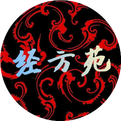When discussing the significance of the floating pulse (fu mai), we immediately think of its association with exterior syndromes, suggesting that the patient may be suffering from an exterior condition. Furthermore, if the patient exhibits symptoms such as slight cough, nasal congestion, and aversion to cold, one might hastily prescribe an exterior-releasing formula. I believe this approach to diagnosis is misleading and detrimental!
Today, let us explore several situations where the floating pulse does not indicate an “exterior” condition!
“Floating Pulse Indicates Interior”
In the Jin Gui Yao Lue, it is mentioned: “If the patient’s pulse is floating at the front, the disease is in the exterior; if floating at the back, the disease is in the interior. If there is low back pain and inability to walk, it must be due to shortness of breath and extreme fatigue.”
From a literal understanding, it is clear that the significance of the floating pulse varies depending on its location. First, when the pulse is floating at the front (cun mai), it is associated with the heart and lungs, where the body’s yang energy resides. The presence of a floating pulse here suggests an outward and upward movement of yang energy, indicating a possible exterior condition, hence Zhang Zhongjing states that the disease is located in the exterior!
If the floating pulse is at the back (chi mai), it pertains to the lower jiao, governed by the liver and kidneys, where the essence and qi are stored. Therefore, it should imply “storage”; ideally, the pulse should be deep. However, if a floating pulse is observed here, it often indicates a deficiency of essence and an excess of fire, as it is said, “Essence is the root of life.” Thus, the floating pulse here suggests a form of deficiency, indicating that the disease is located in the interior, and the treatment should focus on tonifying, which is entirely different from the previous interpretation. Clinical practice must be approached with caution!
“Floating Pulse Indicates Deficiency”
The Jin Gui Yao Lue: Blood Bi and Deficiency Labor Disease Pulse Diagnosis and Treatment also states: “In cases of labor-related illness, the pulse is floating and large, with discomfort in the hands and feet; it is severe in spring and summer, and improves in autumn and winter. Yin cold essence emerges, and one cannot move due to sourness and fatigue.”
This statement shares similarities with the previous one, as it also pertains to individuals who are overworked and deficient in essence. The floating and large pulse reflects a yang manifestation, not indicating heat or excess, but rather deficiency. The floating and large pulse is caused by the deficiency of essence, which fails to be stored. Therefore, during the spring and summer when yang energy rises, the deficiency of essence becomes apparent, while in autumn and winter, when energy is conserved, symptoms may alleviate!
“Floating Pulse Indicates Heat”
In the Shang Han Lun, it states: “If the pulse is floating and there is fever, with thirst for water and difficulty urinating, Zhu Ling Decoction is indicated.”
Upon careful consideration, one will find that this statement is actually a continuation of the previous two. The 221st discusses heat evil entering the upper jiao, which can be dispersed with Zhi Zi Chi Tang; the 222nd discusses evil entering the middle jiao, leading to fluid damage, which should be treated with Bai Hu Jia Ren Shen Tang to clear and resolve. This statement addresses evil entering the lower jiao, causing yin deficiency and resulting in a deficiency heat syndrome, treated with the yin-nourishing and heat-clearing Zhu Ling Decoction. Thus, the floating pulse with fever indicates a loss of essence, suggesting a form of deficiency heat!
“Floating Indicates Recovery”
In the 290th statement: “In Shaoyin wind stroke, if the pulse is slightly floating and weak, it indicates recovery. In Jueyin wind stroke, if the pulse is slightly floating, it indicates recovery; if not floating, it indicates not yet recovered.”
Shaoyin pertains to the organs of water and fire; when heat transforms, yin fluids are damaged, and heat energy emerges, leading to a deficiency heat syndrome. If the essence is insufficient, the chi pulse should be weak, and if heat energy is excessive, the cun pulse should be floating and large. If recovery occurs, a slightly floating chi pulse indicates the restoration of essence, while a slightly floating cun pulse indicates that deficiency heat has receded!
Jueyin represents the transition from yin to yang; if yang does not emerge from yin, it results in a condition of collapse. When yang emerges from yin, yang energy is restored, and yin cold recedes, indicating that recovery is possible. At this time, a floating pulse reflects the restoration of yang energy!
In summary, I have briefly discussed several situations where the floating pulse does not indicate an exterior condition. I hope this serves as a starting point for further discussion, and I welcome any critiques or corrections!

